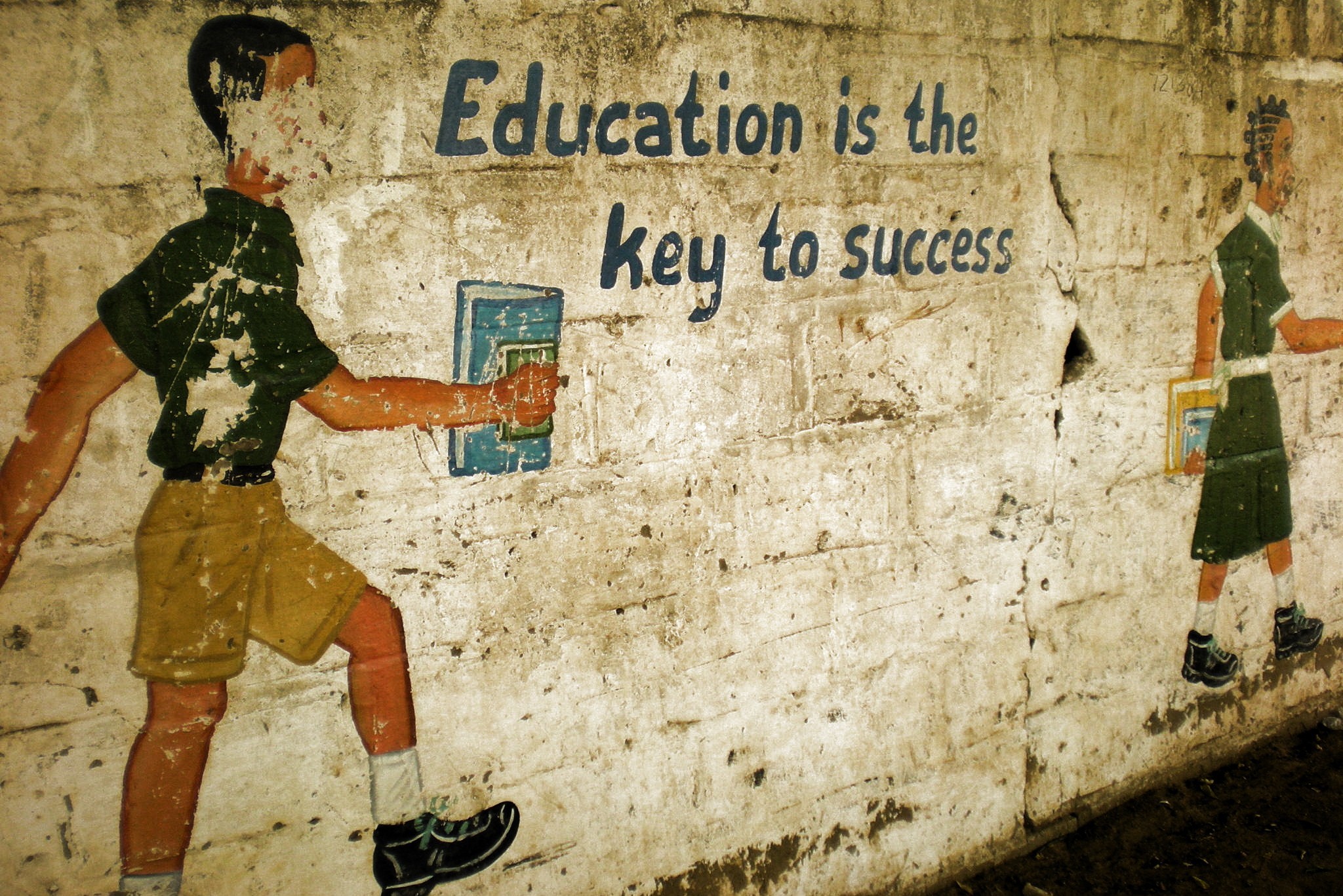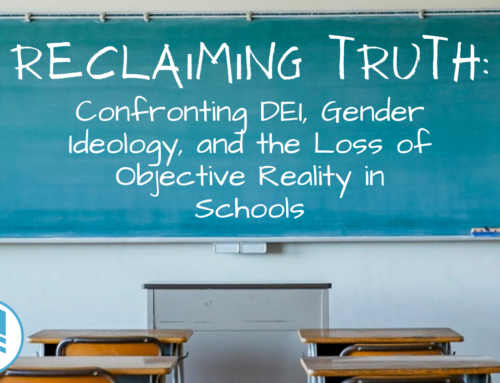
Today’s interview guest is Paul Lott, founder of the National Society for the Advancement of Black Americans (NSABA), an organization that focuses on how issues like education and Critical Race Theory impact black, urban poverty clusters. Lott is also a veteran, the former president of the Harvard Black Alumni Society, and an Amazon bestselling author.
In this interview, Lott uses history and current data to uncover the sources of America’s social, economic, and educational problems. He explains how some of these problems are rooted in age-old issues, while others reside in people’s imaginations due to media hype.
The Need for a Clear Objective in Education
For some time, Lott has been frustrated with the modern education system. However, despite his frustration, he sees extraordinary promise and believes that “…the opportunity that we have right now is to reimagine education based on science….”
In his opinion, defining a clear objective for education will get the system back on track and allow all people to flourish.
Education doesn’t fit into the same mold or have the same goal as it had in previous centuries. According to Lott, the current structure of the educational system is standing on the archaic foundation of the Industrial Age. “In those days, you had a small body of knowledge that you had to transform,” Lott says. “So you had time for repetition, a discussion about it, and kind of recycling and going through it so that … you could learn it well.”
As time has progressed, students are faced with more and more information being crammed into that old structure. “Today, we have a lot more that we’re trying to have them learn, and we’re adding things that have nothing to do with literacy or education. [There are] a lot of social things being thrown in,” Lott explains. For students to be able to keep up with the information overload, curriculum has taken the hit and been watered down more and more over the decades.
Lott believes that the structure of the public school system could be reimagined in a few ways that would bring back a clear objective. First, lengthening the school year (to a 12-month term that would align with the international standard) would give students ample time to properly learn educational material.
Equipping students with “a basic level of literacy [so that they] can function in a democracy and make informed, educated decisions about the direction of the country and the people that they elect” is the second step. And third, schools need to be structured in a way that teaches students to be strong competitors in the workforce so that they can help build the economy.
Why Do Schools Fail?
In addition to needing a clear educational objective, failing schools need to diagnose why they are failing.
Many people are quick to blame on lack of funds or social problems, but Lott has a different perspective. “I don’t think there is such a thing as a failing school. I think there’s such a thing as a failing community. Schools are a reflection of community cohesion. Community cohesion is a reflection of family stability…[Children perform] based on what’s going on at home. And if you don’t have a strong environment at home, the child is not probably going to have the initiative just to do it.”
Lott discusses a recent movement to get rid of homework in public schools because it was thought to be non-beneficial to students. This movement was an unfounded attempt to explain away an issue with deeper roots, a phenomenon Lott often sees in public schools that are failing.
“Kids don’t get the education you want them to have. Kids get the education they take…I can tell you that a child doesn’t do poorly in school because they don’t care about school; they don’t care about school because, at some point in time, they started to do poorly and fall behind. To protect their own self-identity, they reject the idea that they need to be good at school. And once that culture has set in, that’s a very difficult thing to fight.”
According to Lott, creating successful schools starts in the home, with strong parent-child relationships and an environment that encourages discipline and learning. This family culture will send ripples into the community and help maintain a healthy school system.
Another reason that some give for failing schools is a systemically-racist system, but Lott provides evidence that suggests otherwise. He compares graduation rates of blacks and whites throughout different areas of the country, concluding that “applying racism as a factor in education prevents us from addressing the real problems.”
Black Urban Poverty Clusters
Race issues get a high volume of media attention in America today, leading many people to blame failing schools and impoverished urban areas on racism. In his years studying black poverty, particularly in urban areas, Lott has discovered many historical reasons why these poverty clusters exist in America.
During the Age of Enlightenment, people were taught (through what they believed to be “scientific” sources) that blacks were happy to be slaves and were not capable of any higher achievement. This ideology persisted until the time of the American Civil War.
Then, during the first half of the 20th century, The Great Migration occurred. “So during the Great Migration, blacks moved North and West, and every single area where we see poverty clusters, it’s as a result of blacks moving from the South to the North and West for jobs… it was never the case that the education went wrong. The issue was that the education never existed. The average education of a black person migrating north was 6.9 years of school,” Lott explains. “This happened during segregation, and so what you ended up with—you had a lot of blacks moving north, they were clustered into tight communities, and they were uneducated.”
After World War II, a severe labor gap resulted in much of the USA’s manufacturing being sent overseas. This created a lack of jobs and stifled growth in many communities. In response, the government implemented generous social programs, which led to the creation of “permanent poverty enclaves of the least-educated Americans who need manufacturing and skilled labor jobs,” Lott says.
An Honest Discussion About Racism
Does racism keep black Americans from seeking equal opportunity? Lott shares his perspective on how the problem is not racism, but racial discrimination: “We can fix racial discrimination, but we can’t fix racism.”
Lott points to historical evidence from the time of the Civil Rights Movement. “What the early Civil Rights movement focused on was racial discrimination, specifically legal racial discrimination…no one had to sell us on it. We knew it was there. In fact, we knew it so well that in the 1960s, we could write laws to abolish it! Well, we wrote those laws, and we abolished it.”
A few significant indicators of black people’s success can be observed in a comparison of poverty rates spanning the last 50 years. “The black poverty rate in 1959 was 55%. The white poverty rate was 18.1 %….In 1968, the Free Housing Act was passed, black poverty went from 55% to 34.7%, white poverty went to 10%….” Lott shares. “In 2018, black poverty was 20.7%. So if we look at that, it goes from 55% and over the course of 50 years, it falls to less than half.” In Lott’s opinion, these statistics are a good indicator of an America that offers equal opportunity to black people.
Racial discrimination no longer legally exists in America, Lott says, despite the ongoing media narrative trying to convince people that America is systemically racist “to maintain a system of control over our minds.” In his view, people aren’t inherently racist, but are simply responding to a racism that someone told them about.
“When I look at modern racism, I look at…the stories that we tell. We create it in the narratives that we embrace….You put small children together, they don’t know about [racism], they don’t care….”
In Summary
In other segments of the interview, Lott talks about how more money per school does not guarantee success. He also discusses some of NWEF’s core principles: The Role of Instruction, The Role of Government, Faith and Morality, and Facilities.
To watch the entire interview, click here. To watch specific portions, you can select a topic below:
-
- Intro and Thoughts on Today’s Education
- The Evolution of Our Education Goals
- What Causes Failing Schools
- Do More Resources Solve the Problems of Failing Schools?
- Are Failing Schools the Result of Racism?
- Are Failing Schools the Result of Racism? (Continued)
- Racism vs. Racial Discrimination
- Racism vs. Racial Discrimination Part 2
- The Role of Instruction in Education
- The Role of Government in Education
- The Role of Faith and Morality in Education
- Facilities and Closing Remarks
If you prefer to listen via podcast, check out the first and second part of the interview here.
Want to hear more from today’s teachers, parents, administrators, and policy influencers? Subscribe to our YouTube channel to receive alerts when we post new interviews!
Note from the Editor: We thank all our contributors for their insights and expertise. However, the views of guest authors or interviewees are not necessarily those of Noah Webster Educational Foundation.





[…] an interview with the Noah Webster Educational Foundation, the president of NSABA, Paul Lott, explains why the form was necessary. Parents need to notify the school that they know their […]
[…] out “Anti-American Ideology is Covertly Creeping into K-12 Curriculum,” “Schools Don’t Fail Because of Racism,” and “How government runs our schools and what you can do to change it” for additional […]